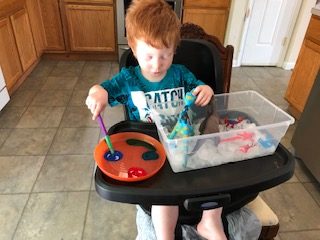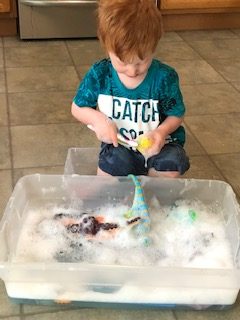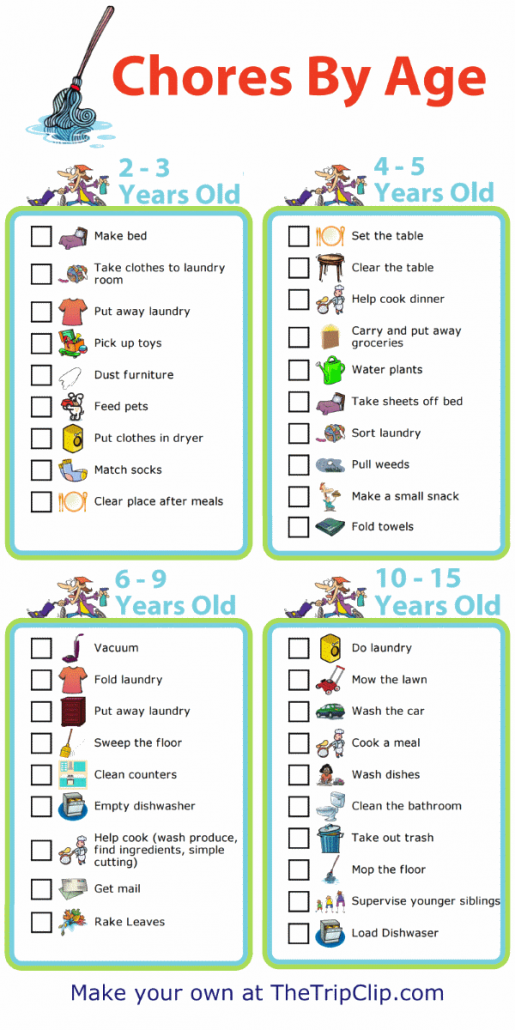As many will often here me say, Social/Emotional Development is the foundation for all learning. This is an area of development that we, as early childhood professionals and parents, should help children develop fully to support other areas of learning. Social/Emotional Development focuses on several key areas:
· Self-Concept
· Self-Control
· Approaches to Learning
· Interactions with Others
· Social Problem Solving
Within this especially important area of development one aspect of Self-Concept is often missing. We forget to celebrate our differences, and the amazing diversity in our world.
My meaning for “celebrating differences” is not to say that we simply focus on different holiday’s from different cultures, but rather making diversity a part of our everyday conversations with young children and valuing the differences in people during our everyday lives.
Very young infants’ development is connected to the safety they feel within relationships with adults. They haven’t yet developed that sense that they are an individual, in a way they perceive others as an extension of themselves. They are taking in a lot of information as their brains develop quickly based on their needs getting met and the environment they are exploring. Their development is rooted in feeling.
At around 18 months old, children start to notice physical differences, like skin color/tone, hair color, etc. Between the ages of toddlerhood and five or six years old, children are working on making sense of their world, and trying to make sense of every part of who they are, how they fit in the world with others. This is the time that many in the early childhood field describe as the stage of pre-prejudice. Their experiences with difference, and how we talk about, or don’t talk about them will shape how they see themselves in relation to others.
This is the time in development when the questions start.
“Kids are not color blind. So don’t be color silent”
This is one of the quotes that I heard while listening to the podcast I’ve attached that really stood out for me. Skin, hair, eyes, body, are all physical characteristic that are out in the open, the differences are obvious. How we as adults address these difference plays a huge role in how children develop the sense of who they are, and how they are valued. Self-concept = Self-Esteem.
Sometime is just as simple as have an open conversation about differences, sometimes it takes more thought or even finding the answers together, but it’s important to have these conversations about differences in a positive and appropriate way. In writing this it brings back a memory of a conversation I had with children in our three-year old preschool classroom.
I have freckles all over my body. One day as I sat on the floor engaging a group of children in play, a little girl asked, “Why is your skin dirty?”. “Those are my freckles Olivia. Some parts of my skin are brown making spots that are darker” She enjoyed the fact that I had dots, and this opened up a conversation with the group of children about how all of our skin is different. We put our arms together as a group, and every beautiful tone became apparent.
This is only a beginning of how we can address differences in a natural, positive way. As we all know, this is a time that harder conversations will come up. My colleagues at the Promise Resource Center have included a wealth of important information in their posts as well.
Resources to get the conversation going:
In this 20-minute podcast experts and parents talk about how they have addressed those difficult conversations with young children.
“Even babies notice differences like skin color, eye shape and hair texture. Here’s how to handle conversations about race, racism, diversity and inclusion, even with very young children.”
Talking About Race With Young Children
https://www.npr.org/2019/04/24/716700866/talking-race-with-young-children?fbclid=IwAR262i36JkNreR2lYg0pPPHDPL9u6iyHSVkMV2vrR3Ehdl-1oG-0ZlXKMrY
 That should motivate my toddler to pick them up. Who doesn’t like a little water play?! Might as well add some painting before cleaning the dinosaurs that way both my toddler and the dinosaurs get cleaned up. I put some dirty dinosaurs in a container of ice, then provided my toddler with paint. He loved painting the dinosaurs. After he was done painting, we put all the toys and paint brushes in a tub of soapy water, and I let him have at it. Naturally, he did want to get in the container with the dinosaurs.
That should motivate my toddler to pick them up. Who doesn’t like a little water play?! Might as well add some painting before cleaning the dinosaurs that way both my toddler and the dinosaurs get cleaned up. I put some dirty dinosaurs in a container of ice, then provided my toddler with paint. He loved painting the dinosaurs. After he was done painting, we put all the toys and paint brushes in a tub of soapy water, and I let him have at it. Naturally, he did want to get in the container with the dinosaurs.


